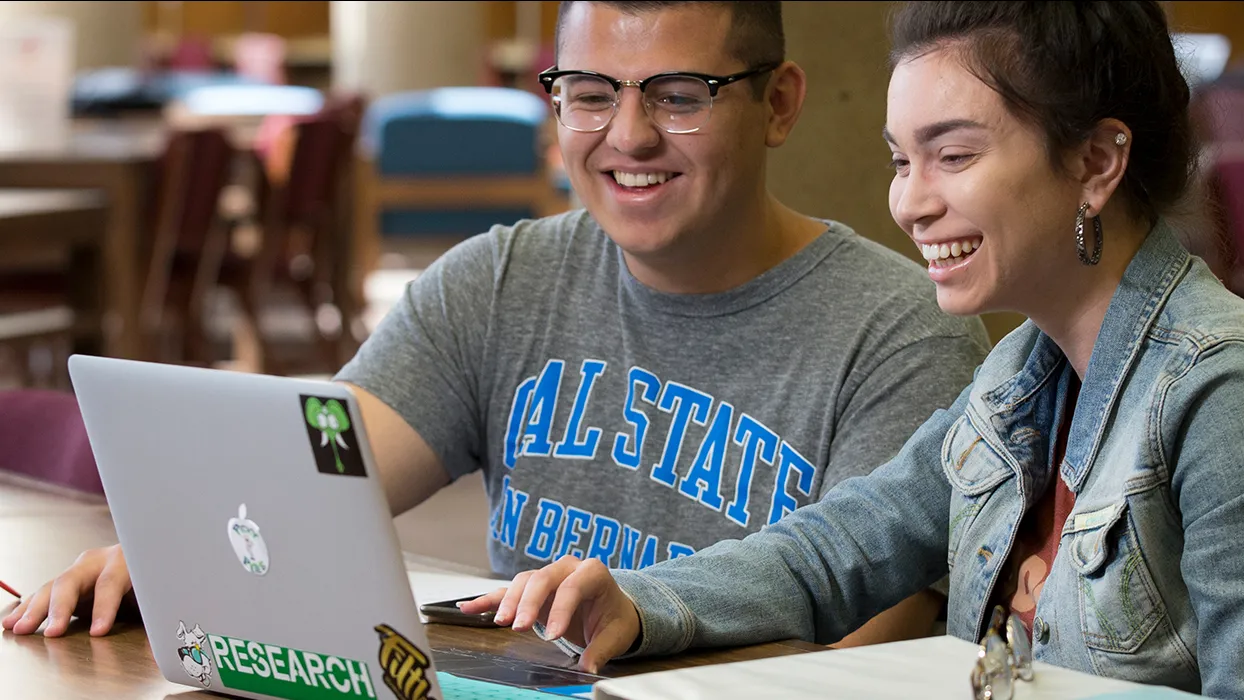Media Contact: Alan Llavore | Office of Marketing and Communications | (909) 537-5007 | allavore@csusb.edu

Fall 2024 brings with it the launch of a new textbook cost-saving program for Cal State San Bernardino students. The Coyote Day One Textbook Access (CDOTA) program is open to all students and is run by the university’s bookstore.
The purposes of CDOTA are to 1) lower the overall cost of course materials for CSUSB students and 2) put instructional materials in students’ hands before the start of term. Current estimates are that 75% of students will save money in the program. Also, national data shows that delayed access to textbooks due to cost is an issue for a majority of students.
Part of the university’s Affordable Learning Solutions (ALS) initiative, students are automatically enrolled in CDOTA for all their courses at a cost of $21.50 per credit hour. Students are completely free to opt out of CDOTA by Sept. 23 (University Census), in which case they would pay for each of their classes’ materials – as they previously did – from their preferred source. However, the opt-out would be for all their courses; students cannot opt out on a course-by-course basis.
This one-semester pilot program was approved by the elected representatives of CSUSB students, the ASI Board, in Fall 2023, and it is supported by ALS Coordinator Cary Barber, associate professor of history, Provost Rafik Mohamed and President Tomás D. Morales, due to the two benefits above.
While the pilot is in place, the previous Inclusive Access (IA) program has been put on hold. IA is a course-by-course program in which individual faculty choose to opt in. In contrast, CDOTA is a campus-wide program at a scale which allows for an even lower price point than that of IA.
The key to CDOTA’s success is making students aware of how the program works, how to calculate whether it benefits them, and how to opt out if it doesn’t. The ASI president, the Division of Student Affairs and Information Technology Services have been sending messages weekly to enrolled students with this information, which directed them to the CDOTA website.
CDOTA’s standard credit-hour pricing is determined by the total cost of providing all materials to all participating students, including the discounted digital rates that many publishers provide for these programs. Therefore, the lower the overall price of the materials, the lower the base price to students. Also, any courses using Open Educational Resources (OER) or free materials help further bring down that overall total cost.
Barber advocated for CDOTA as an effective way to increase student savings and ensure all students received their textbooks on day one of the course (as they had with the IA cost-saving program). He emphasized that, “While this replaces IA for the semester-long CDOTA pilot, ALS continues to assist with – and reward faculty for – replacing their course materials with OER and other zero-cost course materials.”
If this semester’s trial run is a success and the decision is made to continue with CDOTA, the cost savings for students have the potential to grow if faculty adopt more OER. “Not only does this potentially reduce the per-unit cost of CDOTA over time, it may also allow more students to opt out of CDOTA since their combined materials would amount to less than the program's cost,” said Barber.
Faculty have complete freedom in choosing instructional materials and whether they want their class section to have them in electronic form or as physical copies, but it is each student who must decide whether CDOTA is right for them.
“The CDOTA is a program designed to get lowered-cost materials into all participating students’ hands by day one,” said Barber. “This will save participating students money on their textbooks, and it has been our goal to achieve 100% student awareness of the program so those students whom it doesn’t benefit will opt out.”
Part of encouraging student success is addressing the costs associated by being an enrolled student pursuing a degree. “The goal, as always, is to save as many students as much money as possible,” said Barber.